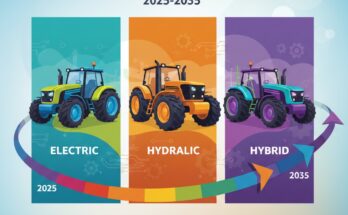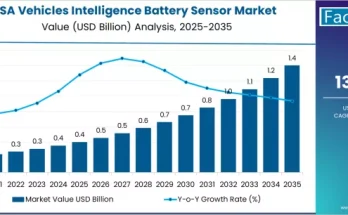As the automotive industry moves toward energy efficiency, sustainability, and advanced vehicle performance, the regenerative suspension system market is gaining momentum. Regenerative suspension systems, which capture and convert kinetic energy from road vibrations into usable electrical energy, are transforming the way vehicles manage energy and improve ride quality. These systems not only enhance vehicle efficiency but also contribute to overall sustainability, aligning with the industry’s shift toward electrification and energy recovery technologies.
With growing emphasis on energy-efficient mobility, ride comfort, and reduced environmental impact, regenerative suspension systems are becoming a key innovation in passenger vehicles, commercial vehicles, and electric mobility solutions.
Market Overview
A regenerative suspension system (RSS) is an advanced automotive technology designed to recover energy lost through conventional suspension movements. Traditional suspension systems dissipate energy from road shocks and vibrations as heat, whereas RSS converts a portion of this energy into electricity, which can then be stored in batteries or used to power vehicle systems.
These systems combine mechanical and electrical engineering principles, integrating sensors, actuators, and energy conversion mechanisms. Beyond energy recovery, RSS also enhances ride comfort, reduces vehicle wear, and contributes to overall operational efficiency.
Manufacturers are increasingly focusing on the development of regenerative suspension systems for electric and hybrid vehicles, as they can extend driving range and reduce the dependency on external charging sources. Additionally, RSS can complement regenerative braking systems, further enhancing energy efficiency and sustainability in modern vehicles.
Regional Insights
The adoption of regenerative suspension systems varies across global regions due to differences in automotive infrastructure, consumer demand, and regulatory frameworks.
North America is a key market for regenerative suspension systems, driven by innovation in electric vehicles, supportive government policies for energy efficiency, and strong investment in automotive R&D. Vehicle manufacturers are increasingly incorporating RSS technologies to meet consumer expectations for performance, comfort, and sustainability.
Europe is a prominent adopter, with a focus on regulatory compliance, sustainability, and advanced vehicle engineering. European countries are prioritizing low-emission transportation solutions, encouraging the integration of energy recovery systems such as regenerative suspensions into electric and hybrid vehicle fleets.
Asia-Pacific is an emerging market, fueled by growing automotive production, increasing demand for electric vehicles, and urbanization-driven mobility solutions. Countries in the region are investing in advanced vehicle technologies and energy-efficient mobility, supporting the adoption of regenerative suspension systems in passenger and commercial vehicles.
Other regions, including Latin America and the Middle East & Africa, are gradually exploring regenerative suspension technologies as automotive infrastructure and electric mobility solutions develop, creating potential growth opportunities in the near future.
Key Trends & Forecast
Several trends are shaping the future of the regenerative suspension system market, reflecting the industry’s focus on efficiency, sustainability, and technological innovation:
- Integration with Electric and Hybrid Vehicles: RSS is increasingly integrated into electric and hybrid vehicle platforms to extend range, improve energy recovery, and complement other regenerative systems.
- Advancements in Energy Harvesting Technology: Continuous improvements in electromechanical actuators, energy conversion efficiency, and storage systems are enhancing RSS performance and reliability.
- Focus on Ride Comfort and Vehicle Dynamics: Regenerative suspension systems not only recover energy but also contribute to smoother rides, reduced vibrations, and improved handling.
- Lightweight and Compact Designs: Automotive manufacturers are developing compact, lightweight RSS modules to reduce vehicle weight and enhance efficiency without compromising performance.
- Collaborations and Strategic Partnerships: Collaborations between OEMs, component manufacturers, and technology providers are accelerating research, testing, and commercialization of regenerative suspension technologies.
- Sustainability and Regulatory Support: Governments and regulatory bodies are promoting energy-efficient technologies, encouraging manufacturers to adopt innovative solutions that reduce environmental impact.
These trends indicate a growing market focus on sustainable, high-performance suspension systems that enhance vehicle efficiency, comfort, and operational sustainability.
Applications & End-Use Outlook
Regenerative suspension systems are increasingly utilized in a variety of automotive applications, catering to both consumer and commercial needs:
- Electric Vehicles (EVs): RSS enhances energy efficiency by recovering kinetic energy from road vibrations, helping to extend driving range and improve overall battery performance.
- Hybrid Vehicles: In hybrid systems, regenerative suspension complements regenerative braking, contributing to efficient energy management and reduced fuel consumption.
- Commercial Vehicles: Trucks, buses, and delivery vehicles benefit from RSS through improved ride quality, reduced maintenance costs, and energy recovery during long-distance operations.
- Passenger Vehicles: High-end passenger cars are adopting RSS to offer superior ride comfort, better handling, and enhanced fuel efficiency.
- Autonomous and Smart Vehicles: Advanced mobility solutions, including autonomous vehicles, can leverage regenerative suspension systems for energy optimization, smoother operation, and improved passenger experience.
The growing emphasis on energy recovery, vehicle performance, and sustainability is driving demand across various automotive segments, positioning regenerative suspension systems as a key innovation for the future of transportation.
Conclusion
The regenerative suspension system market is set to transform the automotive industry by combining energy efficiency, sustainability, and enhanced ride comfort. By converting road vibration energy into usable electricity, these systems not only improve vehicle performance but also support the transition toward low-emission, energy-efficient transportation.
As electric and hybrid vehicles continue to gain prominence, regenerative suspension systems are becoming essential components in achieving longer ranges, reduced energy consumption, and improved operational efficiency. OEMs, technology providers, and fleet operators that adopt RSS technologies will benefit from increased sustainability, reduced operational costs, and enhanced consumer satisfaction.
Regenerative suspension systems are more than just an engineering innovation—they represent the future of energy-efficient, sustainable, and high-performance vehicles, offering a transformative approach to mobility in the era of electrification and smart transportation.
Browse Full Report – https://www.factmr.com/report/kick-scooter-market



